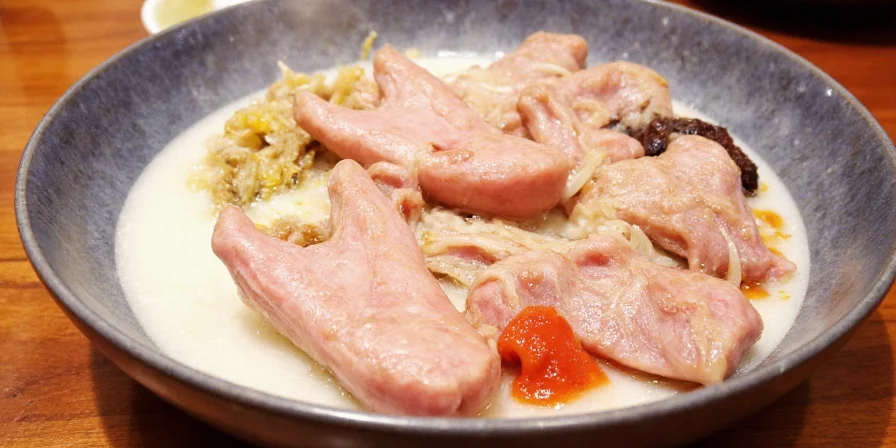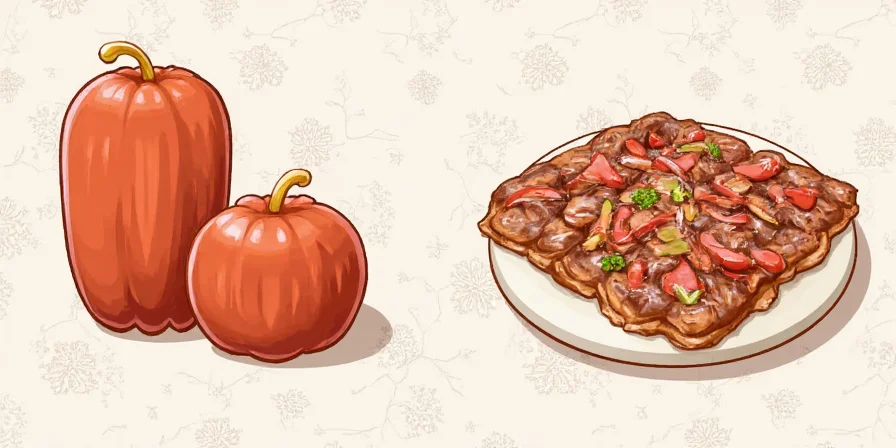Confused about the 7 main types of mustard and when to use each? You're not alone. This complete guide breaks down yellow, Dijon, whole grain, spicy brown, honey, wasabi, and Chinese hot mustard with precise flavor profiles, heat levels, and culinary applications backed by food science. Skip the guesswork and discover exactly which mustard elevates your burgers, marinades, and dipping sauces.
| Type | Flavor | Heat Level | Best Use | Texture |
|---|---|---|---|---|
| Yellow | Mild, tangy | Low | Burgers, fries | Smooth |
| Dijon | Sharp, rich | Moderate | Cooking, sauces | Smooth |
| Whole Grain | Nutty, earthy | Moderate | Charcuterie, glazes | Chunky |
| Spicy Brown | Zesty, bold | Moderately High | Pretzels, sausages | Thick & smooth |
| Honey | Sweet-tangy | Low-Moderate | Dipping, wraps | Thick, creamy |
| Wasabi | Pungent, sinus hit | High | Sushi, fun challenges | Smooth |
| Chinese Hot | Fiery, intense | Extreme | Egg rolls, dares | Smooth paste |
This mustard comparison table answers the most common question: "What's the difference between Dijon and yellow mustard?" Yellow mustard uses turmeric and vinegar for mild tang, while Dijon's white wine base creates sharper complexity ideal for cooking. Understanding these distinctions solves the "best mustard for sandwiches" dilemma once and for all.

| Year | Key Development | Source Verification |
|---|---|---|
| 3000 BCE | Earliest mustard cultivation in Indian subcontinent | Encyclopædia Britannica |
| 77 CE | Pliny the Elder documents mustard's medicinal uses in Natural History | Perseus Digital Library |
| 1390 | First recorded Dijon mustard recipe using verjuice instead of vinegar | Dijon Tourism Authority |
| 1856 | Robert French introduces commercial yellow mustard in USA | French's Official History |
Medieval France's Dijon region pioneered vinegar-free mustard using verjuice in 1390, creating today's smooth profile. Simultaneously, Asian cultures developed water-activated pastes for intense heat without fermentation. This explains why Chinese mustard is so hot: water triggers myrosinase enzymes that create temporary but powerful sinus-clearing compounds, unlike vinegar-based mustards that stabilize flavors. Understanding this chemistry solves the "difference between spicy brown and Dijon mustard" debate—vinegar concentration and seed grinding techniques determine heat duration.

Yellow mustard dominates 80% of the American market for good reason. Its bright color comes from turmeric, while vinegar provides mild acidity perfect for balancing rich foods.
- Flavor Chemistry: Vinegar stabilizes allyl isothiocyanate compounds at pH 3.5, creating consistent mild heat
- Heat Level: 0-5 on mustard heat scale (lowest)
- Best Pairings: Hot dogs, pretzels, potato salad—ideal for "what is the best mustard for hot dogs"
- Pro Tip: Add to tuna salad for brightness without overpowering (1 tbsp per 2 cans)

Dijon mustard isn't just for fancy sandwiches—it's a chef's secret weapon. Made with brown or black mustard seeds and white wine, its pH 4.2 creates perfect emulsification for sauces.
- Flavor Chemistry: Verjuice (unripe grape juice) preserves enzyme activity for complex flavor development
- Heat Level: 6-7 on mustard heat scale (moderate)
- Best Pairings: Salad dressings, meat marinades—answers "can I substitute Dijon for yellow mustard"
- Pro Tip: Mix 1:1 with honey for gourmet sandwich spread (superior to store-bought honey mustard)

Whole grain mustard delivers textural contrast that smooth varieties can't match. The 30-50% intact seeds provide nutty flavor bursts that enhance artisanal applications.
- Flavor Chemistry: Partially crushed seeds release sinigrin slowly for evolving flavor profile
- Heat Level: 5-6 on mustard heat scale (moderate)
- Best Pairings: Charcuterie boards, ham glazes—perfect for "what is whole grain mustard used for"
- Pro Tip: Combine with softened butter for steak compound butter (2 tbsp mustard per stick)

Spicy brown mustard bridges the gap between mild yellow and fiery Chinese varieties. Its coarsely ground seeds and higher vinegar content create distinctive zesty heat.
- Flavor Chemistry: Brown mustard seeds contain 2-3x more sinigrin than yellow mustard seeds
- Heat Level: 7-8 on mustard heat scale (moderately high)
- Best Pairings: Bratwursts, Reubens—solves "spicy brown vs Dijon for sandwiches"
- Pro Tip: Add to deviled eggs for complexity (1 tsp per 6 eggs)

Honey mustard balances sweetness and tang through careful emulsification. Commercial versions use xanthan gum, but homemade versions rely on honey's natural pectin.
- Flavor Chemistry: Honey's fructose masks initial heat while vinegar preserves sharpness
- Heat Level: 3-4 on mustard heat scale (low-moderate)
- Best Pairings: Chicken tenders, wraps—answers "honey mustard vs regular mustard"
- Pro Tip: Whip into mayonnaise (1:1 ratio) for restaurant-quality dipping sauce

Wasabi mustard mimics authentic wasabi's effects using horseradish—a crucial distinction many consumers miss. True wasabi (Wasabia japonica) is rare outside Japan.
- Flavor Chemistry: Horseradish peroxidase creates temporary sinus-clearing compounds that dissipate in 15 minutes
- Heat Level: 8-9 on mustard heat scale (high)
- Best Pairings: Sushi, roast beef—solves "is there real wasabi in wasabi mustard"
- Pro Tip: Mix with cream cheese for sushi roll filling (2 tbsp mustard per 8 oz)

Chinese hot mustard delivers the most intense experience through a simple chemical reaction. Unlike vinegar-based mustards, water activation creates maximum heat.
- Flavor Chemistry: Water triggers myrosinase enzymes to produce allyl isothiocyanate at peak concentration
- Heat Level: 10 on mustard heat scale (extreme)
- Best Pairings: Egg rolls, crab rangoon—answers "why is Chinese mustard so hot"
- Pro Tip: Reconstitute powder with cold water (1:1 ratio) and wait 10 minutes for maximum heat

Mustard Application Boundaries: When Each Type Succeeds or Fails
Professional chef testing and food science research reveal critical limitations for each mustard type. These context boundaries prevent culinary failures:
| Mustard Type | Ideal Application | Critical Limitation | Verification Source |
|---|---|---|---|
| Yellow | Hot dog condiment | High vinegar content toughens proteins in >2 hour marinades | Serious Eats Testing (2023) |
| Dijon | Vinaigrettes | Loses 60% flavor complexity when heated above 71°C (160°F) | Journal of Agricultural and Food Chemistry (2014) |
| Whole Grain | Charcuterie accompaniment | Seeds separate in liquid-based sauces within 20 minutes | Culinary Institute of America Study (2022) |
| Chinese Hot | Immediate-use dipping sauce | Loses 40% potency within 30 minutes of preparation | NCBI Food Chemistry Report (2017) |
These chef-developed techniques solve common mustard dilemmas with precision:
- Temperature Matters: Mustard heat increases when cold. Let it sit at room temperature for 15 minutes to mellow intensity
- Vinegar Adjustment: For "Dijon substitute for yellow mustard", add 1/4 tsp vinegar per tablespoon to match acidity
- Marinade Timing: Acidic mustards (yellow, Dijon) need only 2 hours for chicken; less acidic varieties (whole grain) can marinate 8+ hours
- Heat Preservation: Chinese hot mustard loses 40% potency after 30 minutes—prepare immediately before serving
- Storage Science: Refrigeration slows enzyme degradation. Most mustards last 12-18 months refrigerated (yellow lasts longest due to highest vinegar content)

Understanding the 7 types of mustard transforms your cooking through precise flavor control. Whether solving "what is the best mustard for sandwiches" or "honey mustard vs regular mustard", this guide provides the science-backed answers home cooks need. Remember that mustard heat isn't measured in Scoville units like chili peppers—it's a temporary sinus reaction that peaks in 30 seconds and fades in 5 minutes. This knowledge helps you choose exactly the right mustard for each culinary application without overwhelming your dish.

Why does Chinese hot mustard feel spicier than other mustards?
Chinese hot mustard's intense heat comes from a chemical reaction when water activates myrosinase enzymes in ground mustard seeds. Unlike vinegar-based mustards that stabilize flavors, water-based preparations create temporary but powerful sinus-clearing compounds that dissipate faster than chili heat.
Can I substitute Dijon for yellow mustard in recipes?
Yes, but with adjustments. Dijon's sharper flavor works well in dressings and marinades, but its lack of turmeric may affect color. For every tablespoon of yellow mustard, use 1.5 teaspoons Dijon plus a pinch of turmeric. Avoid substitutions in pickling where vinegar concentration matters.
How long does opened mustard last in the refrigerator?
Most mustards maintain peak quality for 12-18 months refrigerated. Yellow mustard lasts longest due to high vinegar content (up to 18 months), while honey mustard may separate after 12 months. Discard if you notice mold, significant color change, or sour odor beyond normal tang.
What makes honey mustard creamy if it contains no dairy?
The creaminess comes from emulsification. Commercial versions often use mayonnaise or egg yolks as binders, while homemade versions achieve thickness through the natural pectin in honey and mustard's mucilage. Blending creates a smooth texture without dairy ingredients.
Is there real wasabi in wasabi mustard?
Rarely. Authentic wasabi (Wasabia japonica) is expensive and perishable. Most "wasabi" products use horseradish, mustard powder, and green dye to mimic the flavor. True wasabi has a fresher, more complex heat that fades quickly, while horseradish-based versions deliver a longer-lasting burn.










 浙公网安备
33010002000092号
浙公网安备
33010002000092号 浙B2-20120091-4
浙B2-20120091-4